6.12.2019
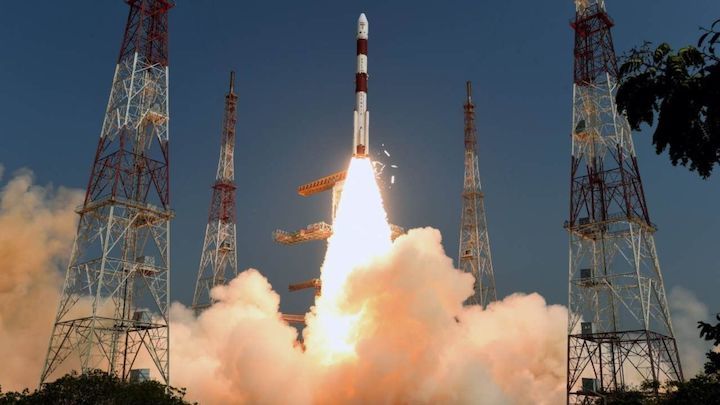
After the successful launch of India's CartoSAT-3 satellite last month, the Indian Space Research Organization (ISRO) is gearing up to launch a surveillance satellite this month. The launch is planned for 11 December at 3.25 pm IST, as per an ISRO press release on the mission, dubbed 'PSLV-C28'. Payloads in the launch will be the RISAT-2BR1 surveillance satellite, and nine other commercial Cube- and nano-satellites.
The primary payload on the PSLV this launch will be the Radar Imaging Satellite–2BR1, or the RISAT–2BR1. This is an advanced earth observation and radar surveillance satellite that will join its cousin, the RISAT-2B satellite, which was launched on 22 May this year. RISAT-2B replaced RISAT-2, which was named a ‘spy satellite’ for its role in eyeing terror camps along the India-Pakistan border.
Another satellite, the RISAT–2BR2 is also said to be getting a lift to orbit by the end of the month, the Times of India reported. It is said that ISRO will be launching a series of four to five RISAT satellites as part of a surveillance constellation.
"At least four RISAT satellites in space are required for security forces to keep surveillance on a particular spot on a daily basis," the report said.
RISAT-2BR1 had a mission life of five years and it will be placed in a 560-km, low-Earth orbit, at an inclination of 37 degrees.
These satellites will help in round the clock border surveillance by looking at terror camps across the border. It will also help keep a check on infiltration and illegal entry and send images that will help in agriculture, forestry and disaster management support. The RISAT satellites are equipped with a synthetic aperture radar (SAR) that can take pictures of the earth during day and night, and also under cloudy conditions
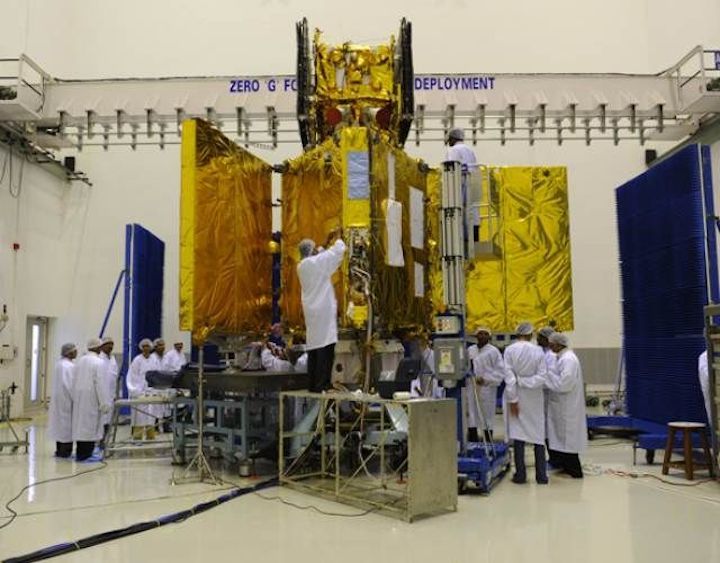
RISAT-1 undergoing prelaunch tests at clean room in Sriharikota in 2009. Image: ISRO
The TOI report said that the satellite has an X-band synthetic aperture rade (SAR) with radial rib reflector 3.6 m mesh antenna.
"The radar system is a much more advanced desi version of the Israeli TECSAR 1 system," the report stated. RISAT-2BR1 has a powerful 0.35m resolution (two objects separated by 0.35m distance can be distinctly identified) and will cover a swathe of 5 to 10 km."
Alongside it, the PSLV-C48 will also carry nine customer satellites as part of a commercial arrangement with NewSpace India Limited. The payloads will include one satellite from Israel, another from Italy, one from Japan, and six from the United States.
ISRO chief K Sivan had recently announced that ISRO, till March 2020, will launch a total of 13 missions, including six rocket launches, and seven satellite missions. He didn't, however, delve into the actual mission details.
ISRO undertook seven missions in total this year, including the much-celebrated Chandrayaan 2 mission, so far a partial success. The lander Vikramcrashed into the moon a few minutes before it could land, thereby killing any chance the rover Pragyaan had of exploring the moon. The orbiter still survives the mission and has already returned many early results from its current orbit around the moon.
Quelle: TECH2
----
Update: 8.12.2019
.
ISRO to launch of RISAT-2BR1 and 9 commercial satellites on December 11
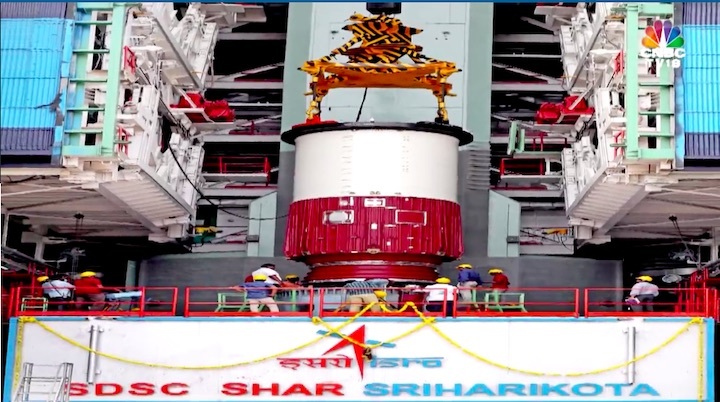
SRO to launch RISAT-2BR1 and nine commercial satellites on December 11 aboard PSLV-C48.
The space agency said PSLV-C48 will launch RISAT-2BR1 from the first launch pad (FLP) of Satish Dhawan Space Centre SHAR, Sriharikota in Andhra Pradesh.
RISAT-2BR1, weighing about 628 kg, will be placed into an orbit of 576 km at an inclination of 37 degree.
Quelle: CNBC
+++
PSLV-C48/RISAT-2BR1

PSLV-C48 is scheduled to launch RISAT-2BR1 and 9 commercial satellites on December 11, 2019 from Satish Dhawan Space Centre SHAR
PSLV-C48, which is the 50th mission of PSLV, will launch RISAT-2BR1 from the First Launch Pad (FLP) of Satish Dhawan Space Centre (SDSC) SHAR, Sriharikota. The launch is tentatively scheduled at 1525 Hrs IST on December 11, 2019, subject to weather conditions.
RISAT-2BR1, a Radar imaging earth observation satellite weighing about 628 kg, will be placed into an orbit of 576 km at an inclination of 37 degree.
PSLV-C48 will also carry 9 customer satellites of Israel(1), Italy(1), Japan(1) and USA(6) as co-passengers. These international customer satellites are being launched under a commercial arrangement with NewSpace India Limited (NSIL).
PSLV-C48 is the 2nd flight of PSLV in 'QL' configuration (with 4 strap-on motors). This will be the 75th launch vehicle mission from SDSC SHAR, Sriharikota and 37th launch from the First Launch pad.
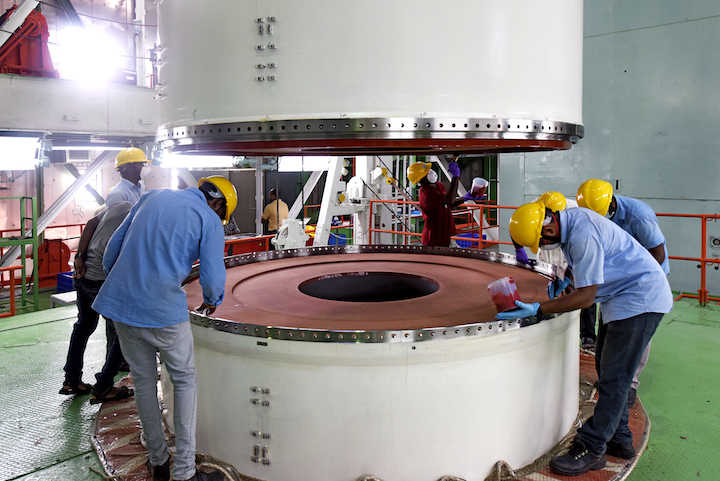
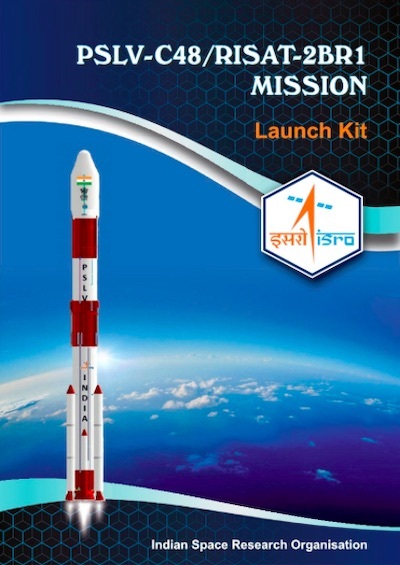
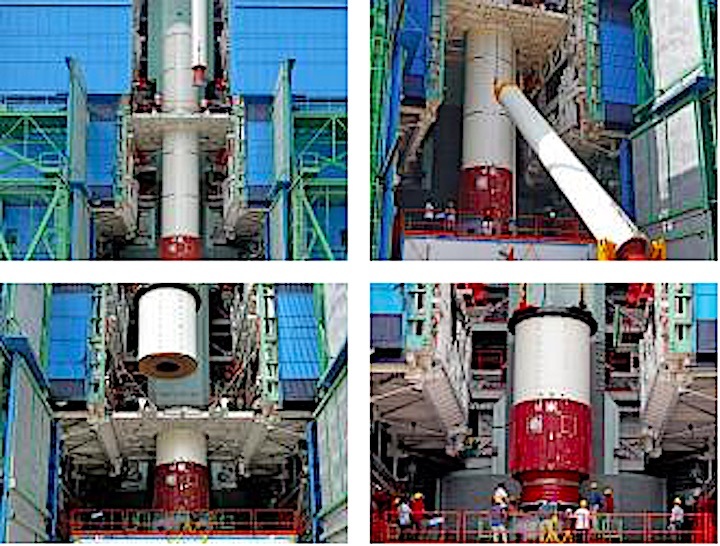
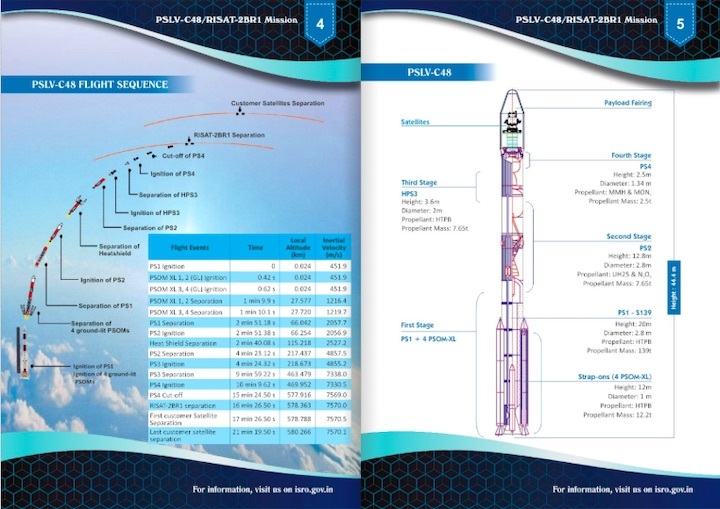
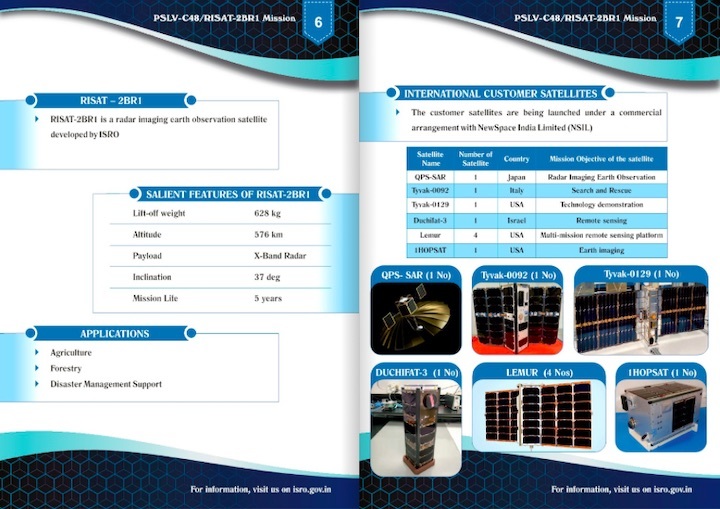
Quelle: ISRO
----
Update: 12.12.2019
.
Indian PSLV launches RISAT-2BR1 military satellite
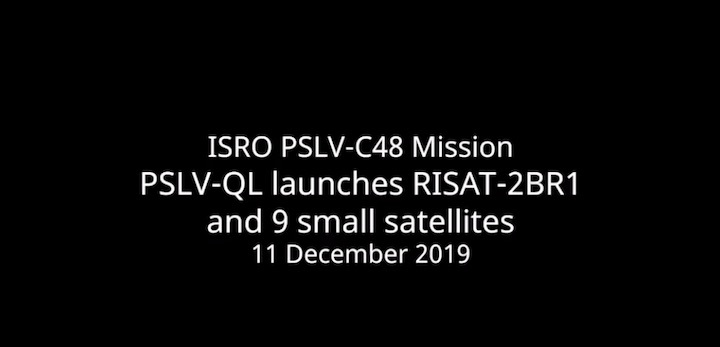
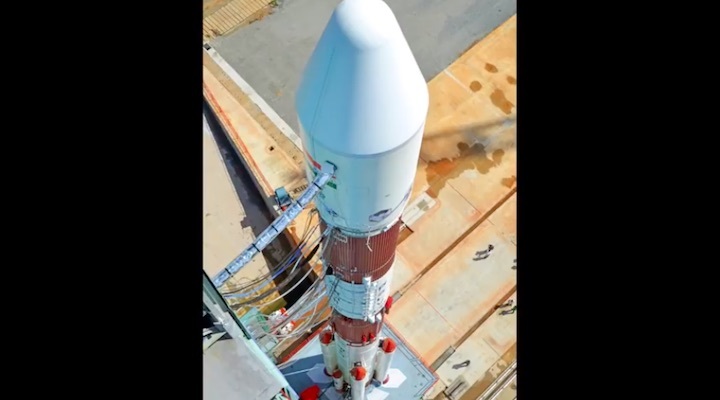
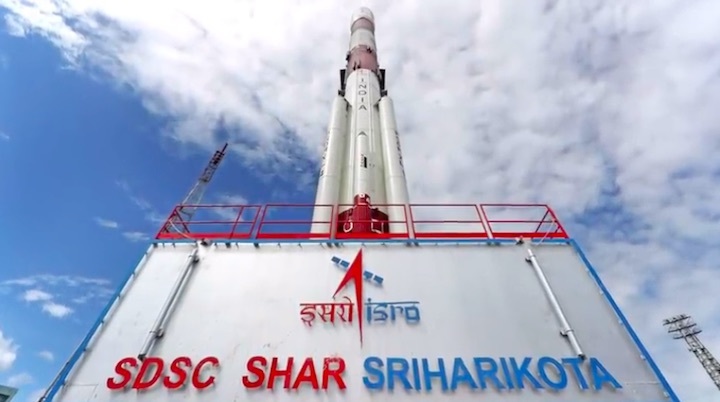
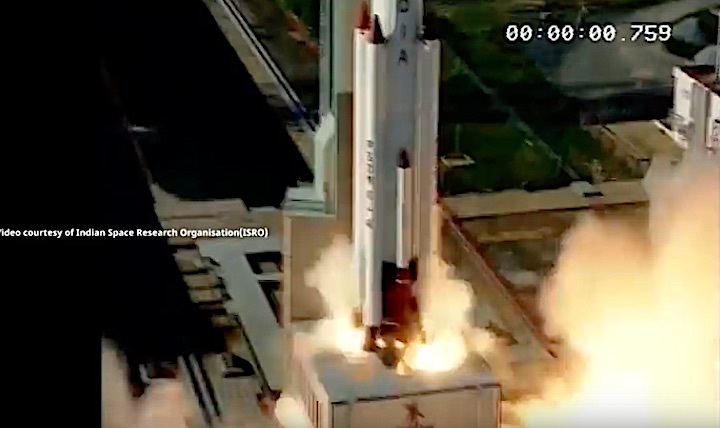
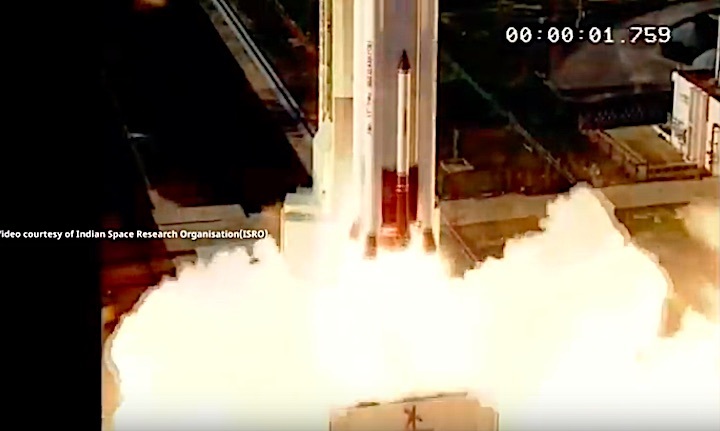
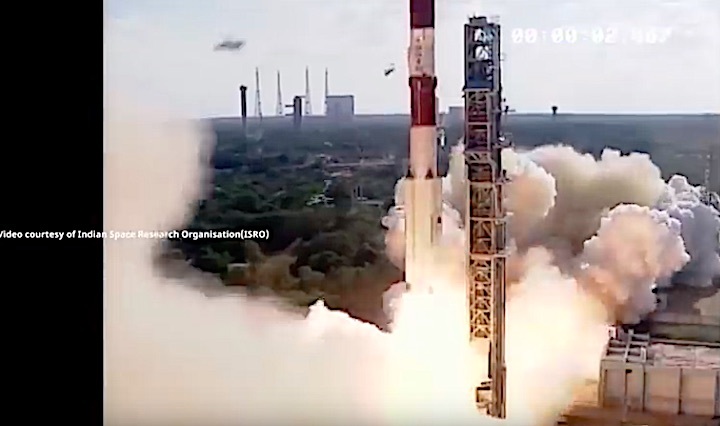
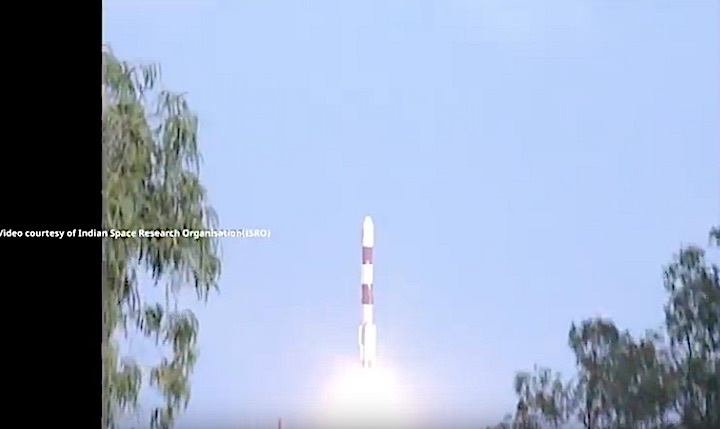
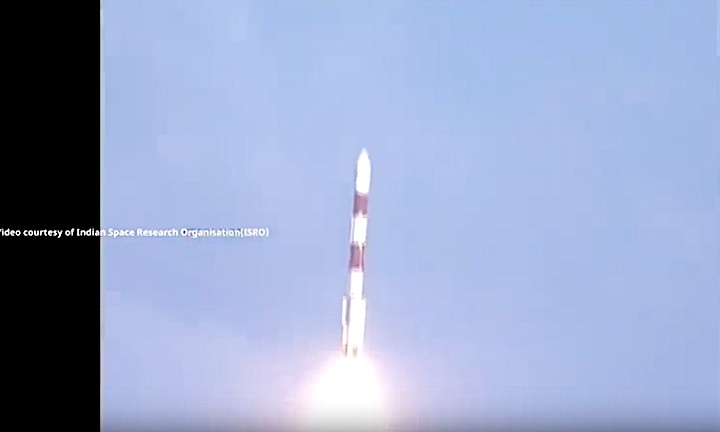
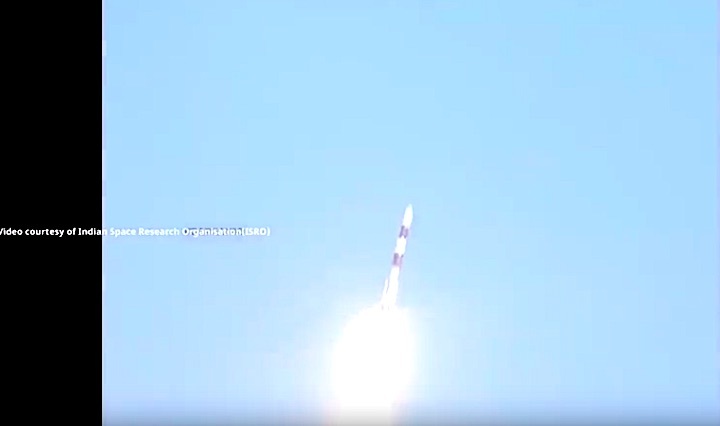
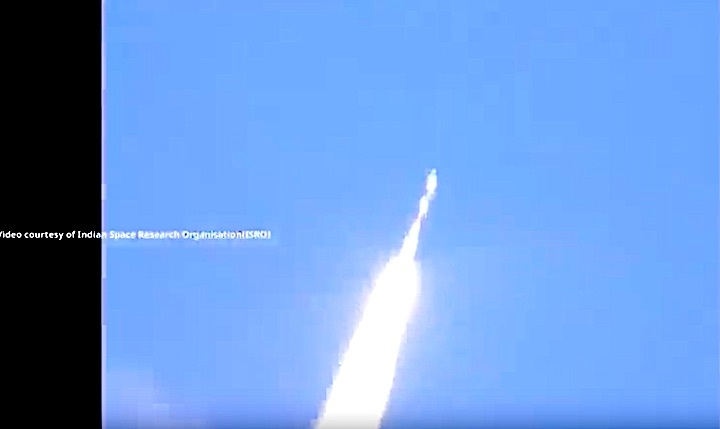
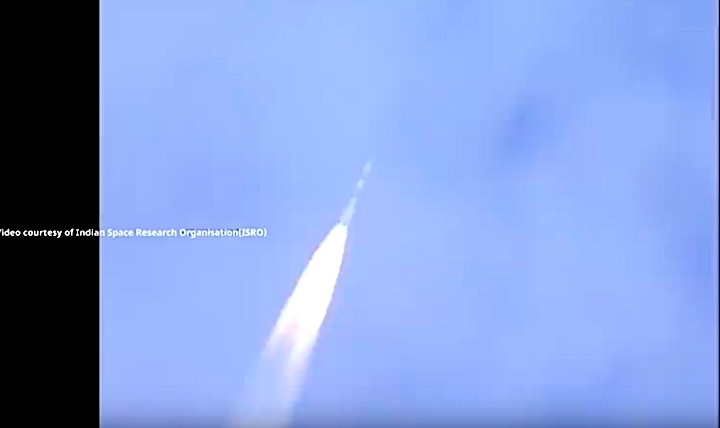
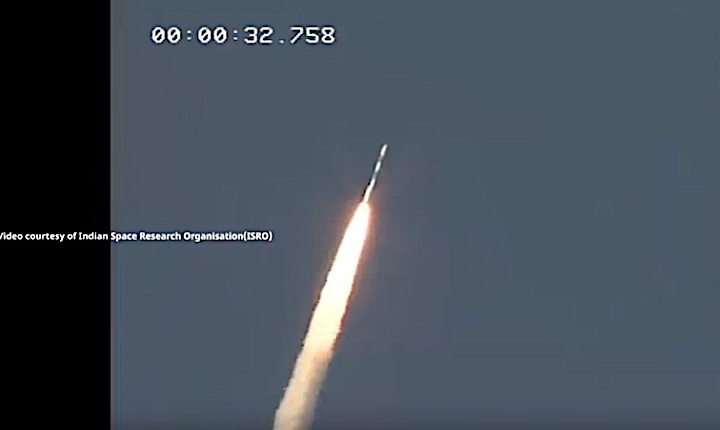
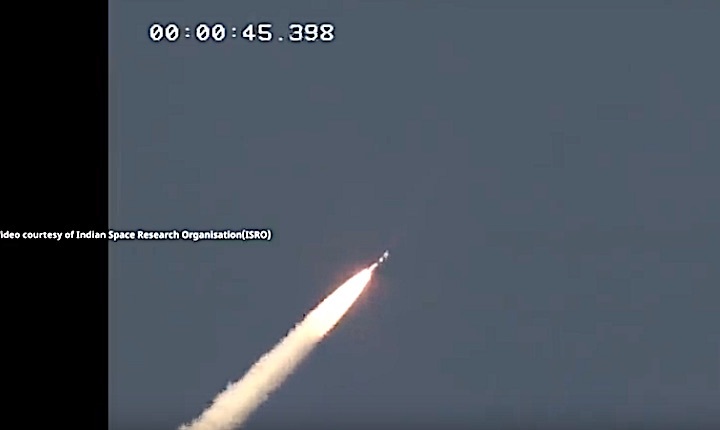
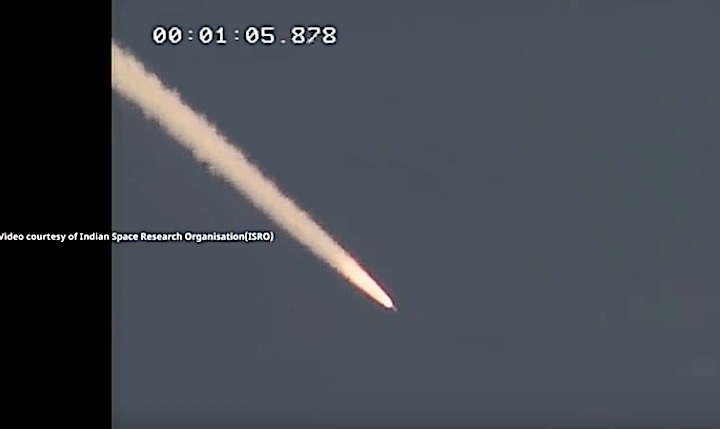
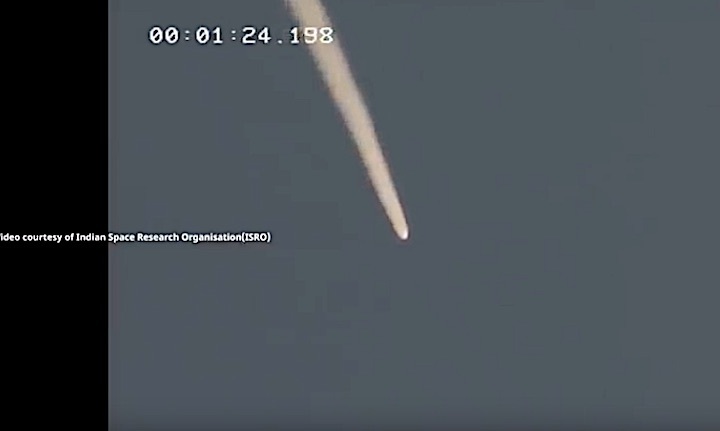
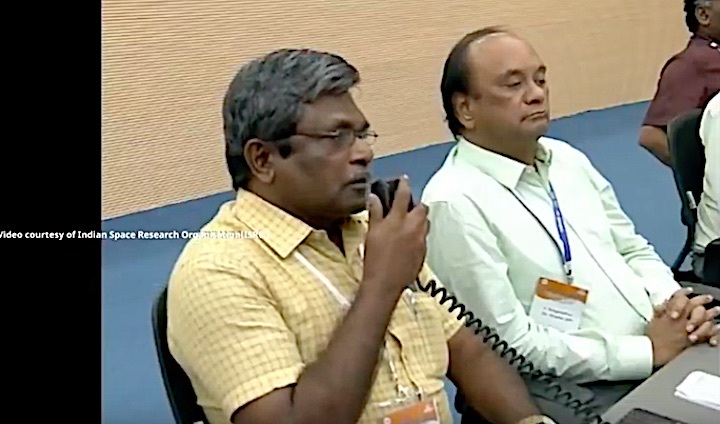
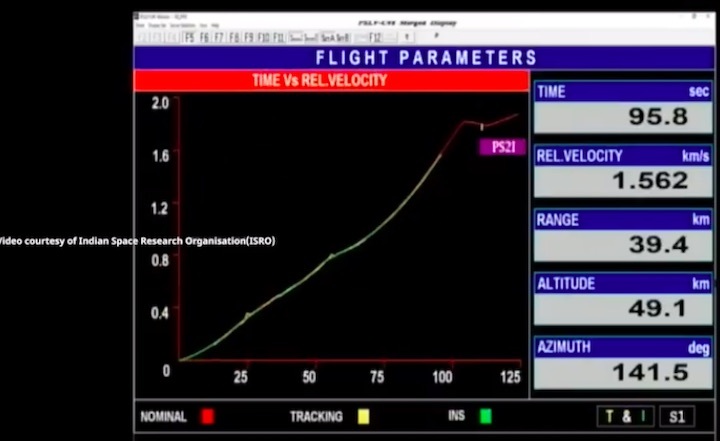
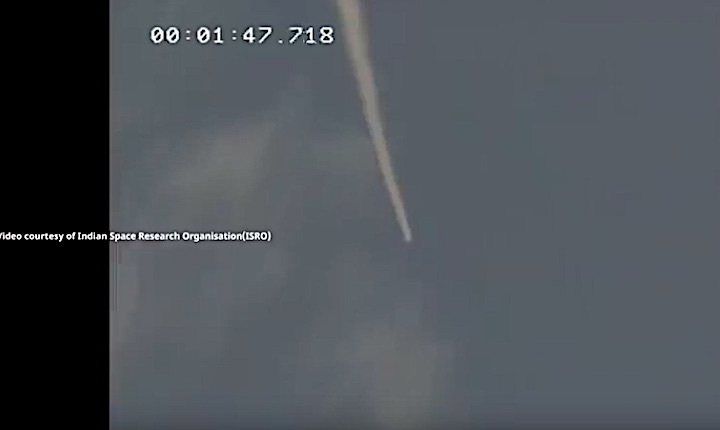
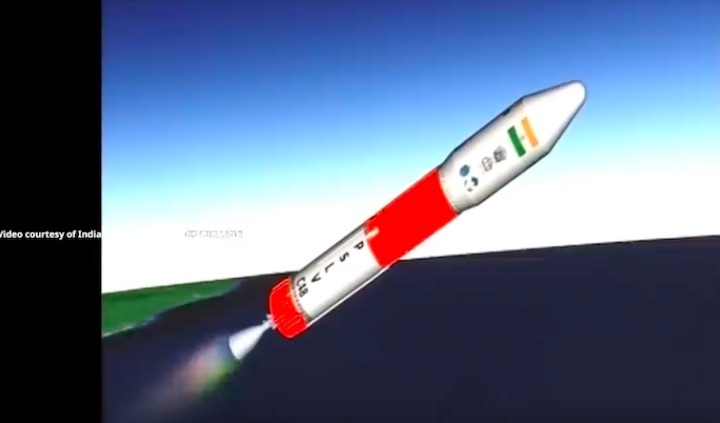
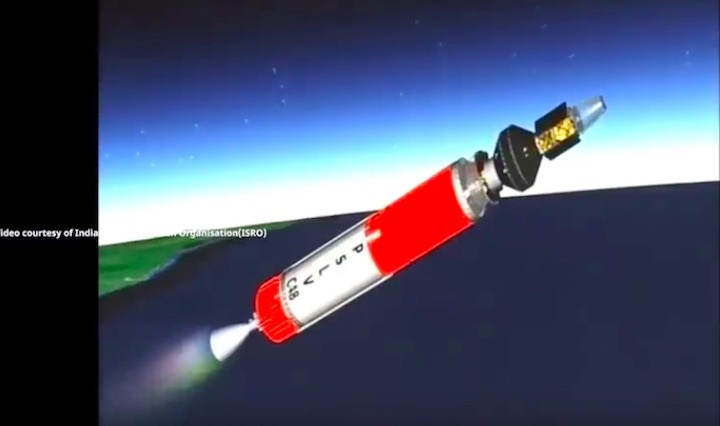
Quelle: ISRO
+++
ISRO launched the fiftieth PSLV mission Wednesday, with its workhorse rocket flying for the second time in barely a fortnight to deploy a radar imaging spy satellite for India’s military. The RISAT-2BR1 satellite was launched from the Satish Dhawan Space Centre at 15:25 local time (09:55 UTC), with deployment into low Earth orbit expected sixteen and a half minutes later.
RISAT-2BR1 is an all-weather radar reconnaissance satellite, able to image the Earth in both daylight and at night, regardless of any clouds obscuring the surface. It is the second spacecraft in a new series of RISAT-2B satellites which are replacing and upgrading India’s radar imaging capabilities.
Wednesday’s launch followed the launch of the first RISAT-2B series satellite, simply named RISAT-2B, in May. The RISAT-2BR1 satellite is nearly identical to the first satellite, however at 628 kilograms (1,385 lb), it is marginally heavier. The satellite was built by the Indian Space Research Organisation (ISRO), which also operates the RISAT constellation. Officially the program performs remote sensing to support agricultural projects, forestry and disaster management, however, RISAT is primarily designed for military surveillance.
RISAT-2BR1 carries a synthetic aperture radar (SAR) payload, which transmits radio signals towards the Earth’s surface and records how they are reflected back towards the satellite. Processing echoes detected from the original signal allows the satellite to build up a profile of the ground below it. RISAT-2BR1’s SAR operates in the X-band of the electromagnetic spectrum.
The RISAT-2BR1 satellite is expected to be deployed into a near-circular orbit, 576 kilometers (358 miles, 311 nautical miles) above the Earth and inclined at 37 degrees. It is expected to operate for at least five years.
Because RISAT uses radio waves – transmitted from the satellite – instead of visible light from the Sun to illuminate the Earth, it can collect images even when it is night in the location to be observed. The X-band signals can also penetrate cloud cover to expose the surface below. The RISAT spacecraft complement India’s optical imaging satellites, such as the Cartosat series.
Within the RISAT program, there are two separate series of satellites. RISAT-2 (and now 2B) spacecraft carry X-band payloads. The original RISAT-2 satellite was launched in April 2009. RISAT-2 was developed under a partnership between ISRO and Israel Aerospace Industries (IAI) and was based on the Israeli TecSAR radar-imaging satellite which ISRO launched as part of the agreement. The imaging system aboard the RISAT-2B satellites is believed to be a development of the Israeli system used on RISAT-2.
RISAT-1 satellites, by contrast, operate in the lower-frequency C-band. RISAT-1 was launched in April 2012 but failed after four and a half years on orbit. A replacement, RISAT-1A, is due to launch next year.
Wednesday’s launch used India’s Polar Satellite Launch Vehicle (PSLV) rocket, flying in its PSLV-QL configuration. The flight number for Wednesday’s mission was PSLV-C48, which marked the fiftieth flight of ISRO’s workhorse rocket. First flown in 1993, PSLV is India’s longest-serving carrier rocket and has been used for two-thirds of the country’s total orbital launches to date.
PSLV was developed to replace India’s previous rocket, the Augmented Satellite Launch Vehicle (ASLV – also known as Advanced Satellite Launch Vehicle). The much larger PSLV offered a payload capacity many times that of the ASLV, allowing ISRO to become more self-reliant in launching its own satellites instead of relying on foreign launchers. PSLV was designed with a particular focus on missions requiring near-polar low Earth orbits.
Despite failing to reach orbit on its maiden flight – after a software error causing the rocket to go out of control – PSLV bounced back and achieved a successful launch at the second time of asking in October 1994. Following a third developmental launch in March 1996 the rocket completed its initial testing and the first operational launch took place in September 1997. That mission reached a lower-than-planned orbit, however, the IRS-1D satellite was still able to reach – and even exceed – its planned mission objectives.
When it returned to flight in May 1999, PSLV began a string of thirty-six consecutive successful launches which would continue until 2017. While many of the rocket’s payloads have continued to be scientific and remote sensing satellites bound for near-polar sun-synchronous orbits, PSLV has also been used to launch geostationary satellites and missions to the Moon and Mars.
PSLV’s first geosynchronous launch came in September 2002, with the METSAT-1 weather satellite which was later renamed Kalpana-1. Subsequent missions have included the lightweight GSAT-12 communications satellite and nine satellites for the Indian Regional Navigation Satellite System (IRNSS), also known as NavIC. Owing to PSLV’s lower performance compared to rockets designed for geostationary launches, these satellites have typically been dropped off in subsynchronous transfer orbits, with the satellites maneuvering themselves into their final orbits.
In 2008 a PSLV was used to send ISRO’s Chandrayaan-1 mission to the Moon, while November 2013 saw the launch of the Mars Orbiter Mission to explore the red planet.
In recent years PSLV has attracted an increasing number of commercial payloads, including dedicated launches and particularly rideshare missions where multiple small satellites utilize excess capacity on other customer or Indian government launches. Wednesday’s mission saw PSLV deploy nine rideshare satellites as part of an agreement between ISRO and commercial provider NewSpace India Limited.
The largest rideshare satellite aboard PSLV-C48 is QPS-SAR 1, carried for Japan’s Institute for Q-shu Pioneers of Space Incorporated (iQPS). QPS-SAR 1, which will be named Izanagi once it reaches orbit, is the pathfinder for a planned constellation of radar imaging satellites which will be used for near-real-time monitoring of the Earth. Like RISAT-2BR1, it uses synthetic aperture radar (SAR). QPS-SAR 1 will be able to image the Earth at resolutions of about one meter (3.3 feet).
The other satellites on Wednesday’s launch were built to varying CubeSat specifications. CubeSats are spacecraft conforming to a series of standard form factors based around ten-centimetre (3.9-inch) cubes, or Units. The CubeSat standard has allowed standardized deployment mechanisms to be developed, cutting the cost of launching these satellites.
The 1st Generation High Optical Performance Satellite Technical Demonstrator (1HOPSAT-TD) is a twelve-unit CubeSat, measuring 20 by 20 by 30 centimeters (7.9 x 7.9 x 11.8 inches). Built by US company Hera Systems, it is intended to validate the design of a series of satellites which Hera will deploy in the near future as part of an Earth-imaging constellation. 1HOPSAT-TD carries an optical imaging system with a resolution of one meter (3.3 feet).
Duchifat-3 is a three-unit CubeSat developed by Israel’s Herzliya Science Centre. Built by high school students to give them experience working on a space mission, the satellite carries Earth imaging and amateur radio payloads.
NASA’s Pathfinder Technology Demonstrator 1 (PTD-1) was developed by the Ames Research Center using a six-unit CubeSat bus built by Tyvak International – serial number Tyvak 0129. PTD-1 is the first in a series of five CubeSats that NASA is developing to test new miniaturized satellite technologies in orbit. PTD-1 will test a Hydros thruster, a propulsion system that uses power from the satellite’s solar arrays to electrolyze water, splitting it into hydrogen and oxygen which are then used to propel the satellite. Hydros is expected to be able to generate one newton of thrust.
COMMTRAIL was also built by Tyvak International, based around a three-unit CubeSat bus with serial number Tyvak 0092. To be operated by an unspecified Italian company, COMMTRAIL will be used to test ultra-high frequency (UHF) machine-to-machine communications.
The final four CubeSats on Wednesday’s launch were Lemur-2 spacecraft for US operator Spire Global. These join an ever-growing constellation of miniature satellites used for weather monitoring and relaying AIS and ADS-B tracking data from ships and aircraft back to ground stations.
PSLV is a four-stage rocket, using a mixture of solid and liquid-fuelled stages. The PSLV-QL configuration used for Wednesday’s launch is one of two new configurations that have been added to the PSLV family this year to fill the gap in performance between its smallest and largest versions.
The original PSLV design – now known as the PSLV-G – relied on six PS0M boosters, each consisting of an S-9 solid rocket motor, to provide additional thrust in the early stages of flight. In 2007 ISRO introduced the PSLV Core Alone, or PSLV-CA configuration, omitting the boosters on missions that do not require the rocket’s full performance. The following year a new PSLV-XL configuration made its debut, using upgraded PS0M-XL boosters with stretched S-12 motors to accommodate heavier payloads.
The new PSLV-DL and PSLV-QL configurations – with two and four PS0M-XL boosters respectively – fill the gap between PSLV-CA and PSLV-XL that was previously occupied by PSLV-G, allowing ISRO to standardize on the enhanced boosters. PSLV-C48 will be the second PSLV-QL to fly, following the rocket’s maiden flight in April which carried the EMISAT electronic surveillance satellite.
For Wednesday’s mission, PSLV flew from the First Launch Pad (FLP) at the Satish Dhawan Space Centre. This was the first of two PSLV launch pads to be built at the facility, replacing smaller launch complexes to the South that were used for the earlier SLV and ASLV rockets. The First Launch Pad was the site of PSLV’s maiden flight in 1993, and now shares the rocket’s launches with the nearby Second Launch Pad. Having two operational launch pads has allowed ISRO to increase the frequency of its launches.
The gap of fourteen days, five hours and fifty-seven minutes between the previous PSLV launch – November’s deployment of Cartosat-3 – and Wednesday’s mission is the shortest turnaround between two PSLV launches to date, although ISRO has achieved slightly shorter gaps between PSLV and GSLV missions before. November’s PSLV launch took place from the Second Launch Pad.
When it flies from the First pad, PSLV is assembled in place at the launch complex. A mobile service tower encloses the vehicle while it is being built up, moving away from the pad once the rocket is complete. The twenty-eight-hour countdown for Wednesday’s launch began at 11:25 local time (05:55 UTC) on Tuesday.
Once the countdown reaches zero, PSLV’s first stage ignited. The first stage, or PS1, consists of an S-138 solid rocket motor that burns hydroxyl-terminated polybutadiene (HTPB). All four PS0M-XL boosters are ground-lit, with the first pair igniting four-tenths of a second after the core stage and the second pair following suit two-tenths of a second later. Like the core stage, these boosters burn HTPB propellant. With all five solid rocket motors burning, PSLV-C48 was released to begin its ascent.
The boosters burned for 69.5 seconds before burning out and separating – again in pairs at 0.2-second intervals. The first stage continued burning alone for about another fifty-one seconds before itself burning out and separating. Two-tenths of a second after the spent first stage was jettisoned, PSLV’s second stage engine ignited to begin its own burn.
PSLV’s liquid-fuelled second stage – designated PS2 or L-40 – has a single Vikas engine consuming UH25 propellant, a mixture of three parts unsymmetrical dimethylhydrazine (UDMH) and one part hydrazine hydrate, and dinitrogen tetroxide oxidizer. Vikas is a license-built version of the French Viking engine, used on earlier members of the Ariane series of rockets.
Under the power of its Vikas engine, the second stage burned for two minutes and 32 seconds. Forty-nine seconds into the burn, with PSLV flying at an altitude of 115 kilometers (71 miles, 62 nautical miles) the rocket shed its payload fairing. Termed a “heat shield” by ISRO, the fairing protects PSLV’s fourth stage and payload as the rocket climbs through Earth’s atmosphere. Once the rocket reaches space the fairing serves no further purpose and is discarded to save weight.
At the end of the second stage burn, PSLV’s second and third stages separated. The third stage, or HPS3, uses an S-7 solid rocket motor with HTBP propellant. It ignited 1.2 seconds after staging and burned for about seventy seconds. Once the third stage burned out, the launch entered a brief coast phase as the rocket climbed towards the apogee – or highest point – of its trajectory.
Nine minutes and fifty-nine seconds after liftoff, PSLV jettisoned the expended third stage. The rocket’s fourth stage will ignite ten seconds later for a five-minute, 13-second burn. PSLV’s fourth stage, PS4 or L-2.5, has two engines burning liquid propellants – monomethylhydrazine and mixed oxides of nitrogen (MON-3) – to ensure a precise orbital insertion. The stage can be restarted for multiple burns if a mission requires it, although for Wednesday’s launch the stage made one burn before spacecraft separation.
As the primary payload of Wednesday’s launch, RISAT-2BR1 was the first satellite to separate from the PSLV. It was released 62 seconds after the final burn is complete – 16 minutes and 26.5 seconds after PSLV lifts off from Satish Dhawan. One minute after RISAT separated, PSLV will begin deploying its secondary payloads – a process that lasted three minutes and fifty-three seconds.
Wednesday’s launch was the fifth PSLV mission in 2019, and the sixth launch of the year for ISRO. Another PSLV mission, carrying RISAT-2BR1’s sister satellite, RISAT-2BR2, is still scheduled for the end of December.
Quelle: NS
